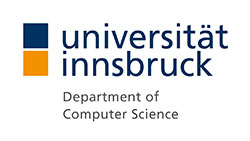We make the measurability of our R&D results one of our primary tasks. We want to show to the world that semantic technologies are becoming reality. Find out more about our results and our spin-off companies.
RDFa vs. Microformats
Most Web pages contain inherent structured and significant data like contact details for various people, dates and addresses of events, descriptive elements for photos and a lot more. As it is, this data is expressed in a way that is easily understandable for humans but incredibly hard to detect and interpret for machines. Once content publishers gain the ability to express this data more completely and tools are developed that are able to understand the semantics, a whole new set of possibilities on the internet becomes available to the end user. New forms of web content, meaningful to computers, will unleash a revolution of the internet. A true Semantic Web might still lie in the future but that’s no reason not to start using the core ideas from which it is being formed. There are several attempts that try to combine the principles of the Semantic Web, as envisioned by Tim Berners-Lee, with currently established technologies such as (X)HTML. This growth of semantics in the existing Web is swiftly advancing the state of the art for all Semantic Web processes. By enhancing existing Web documents with semantics we allow machines to categorise and handle information, so it can be used in a much more practical way, yet keep the principles of the existing web and still code for humans first. This paper reviews, analyzes and compares RDFa and microformats, two of the current technologies for inline metadata in (X)HTML and aims to give an overview over what possibilites are currently available for annotating existing data in Web sites.
Contact person in charge.

